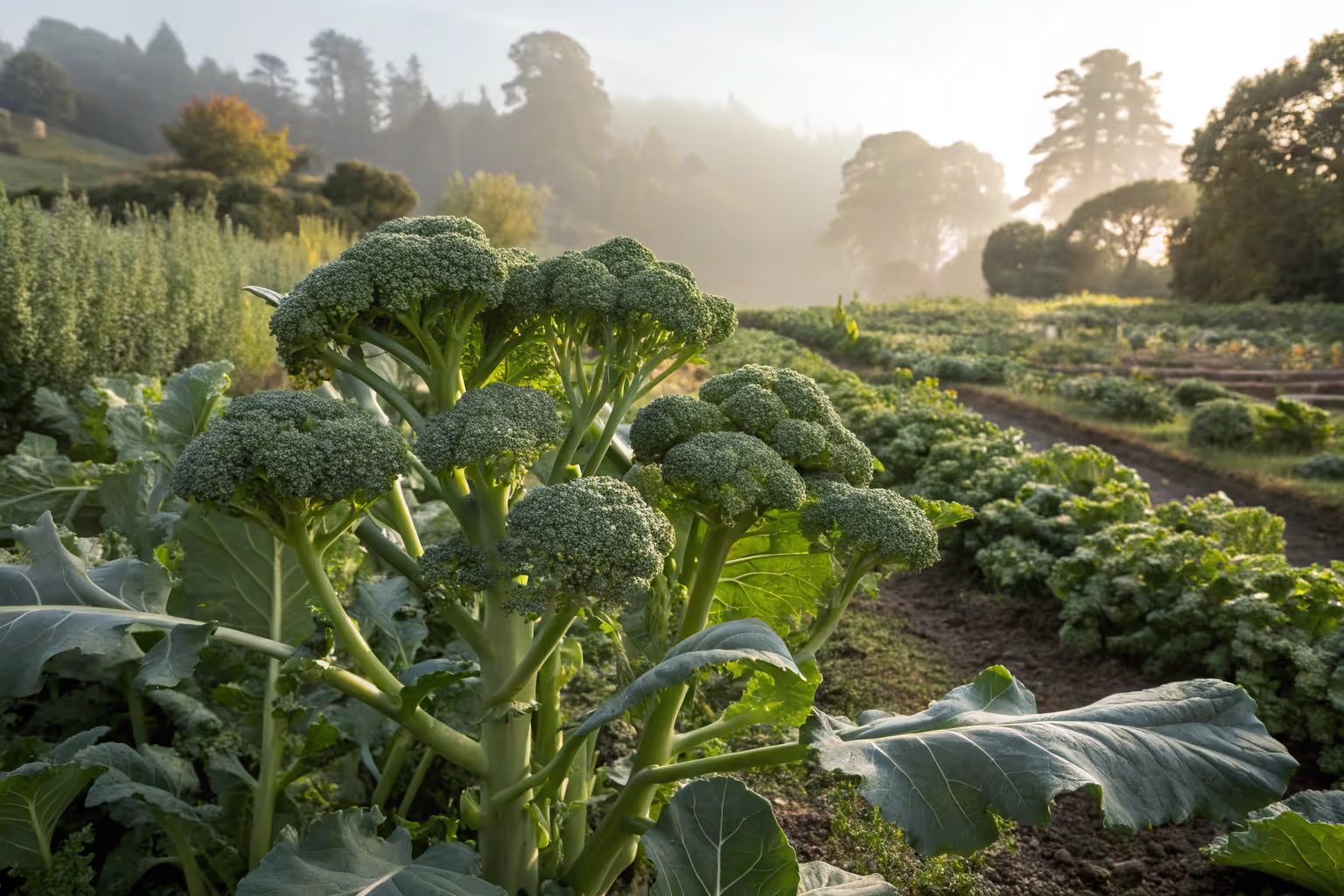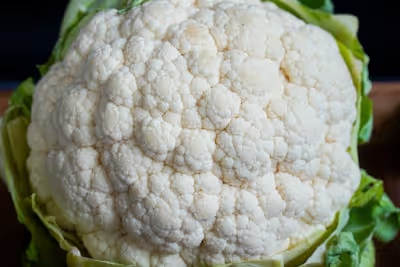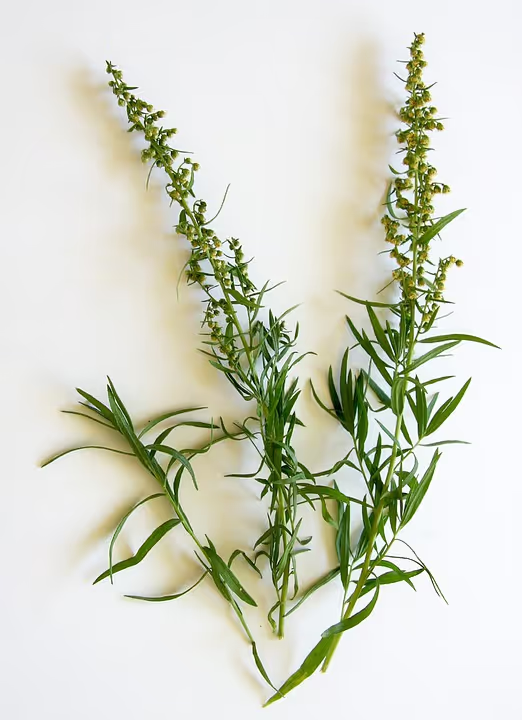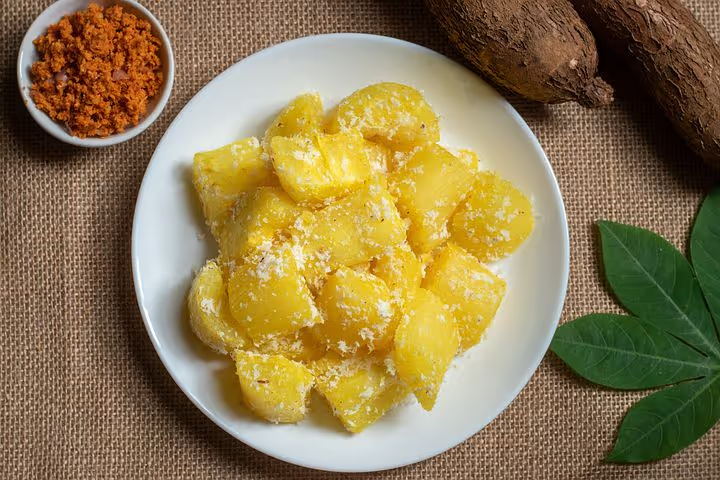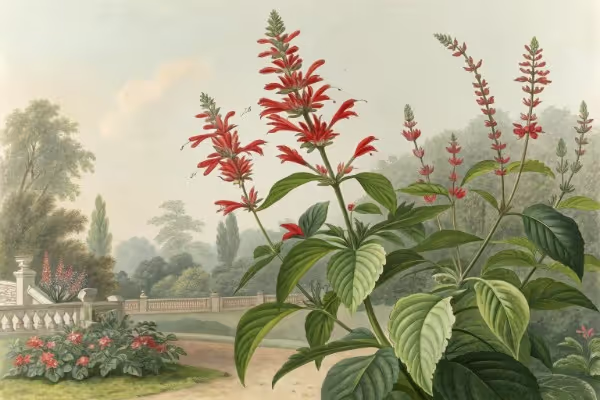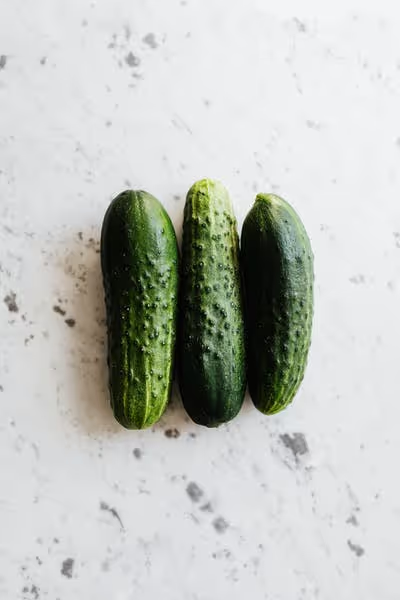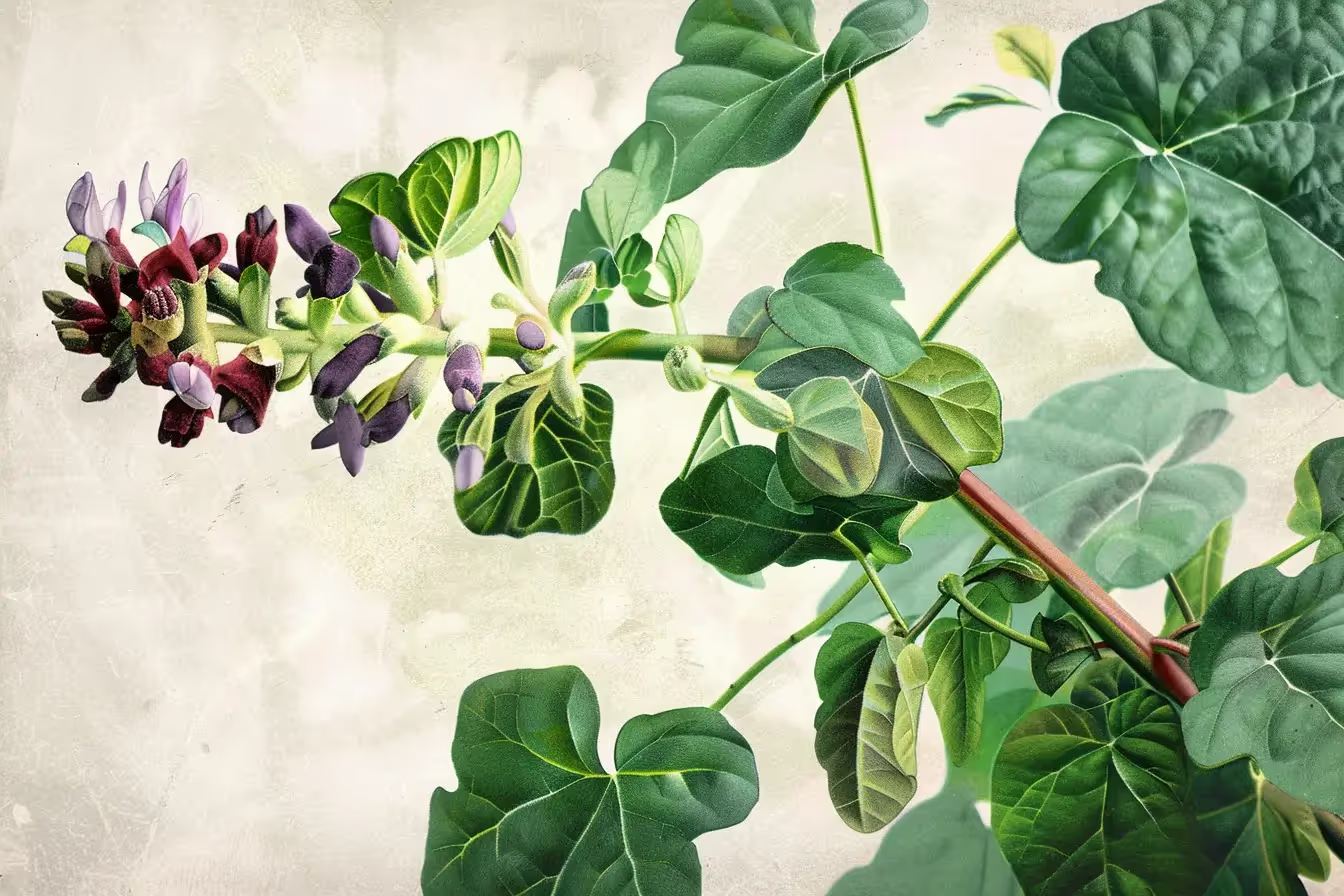Growing Broccoli for a Healthy, Abundant Garden Harvest
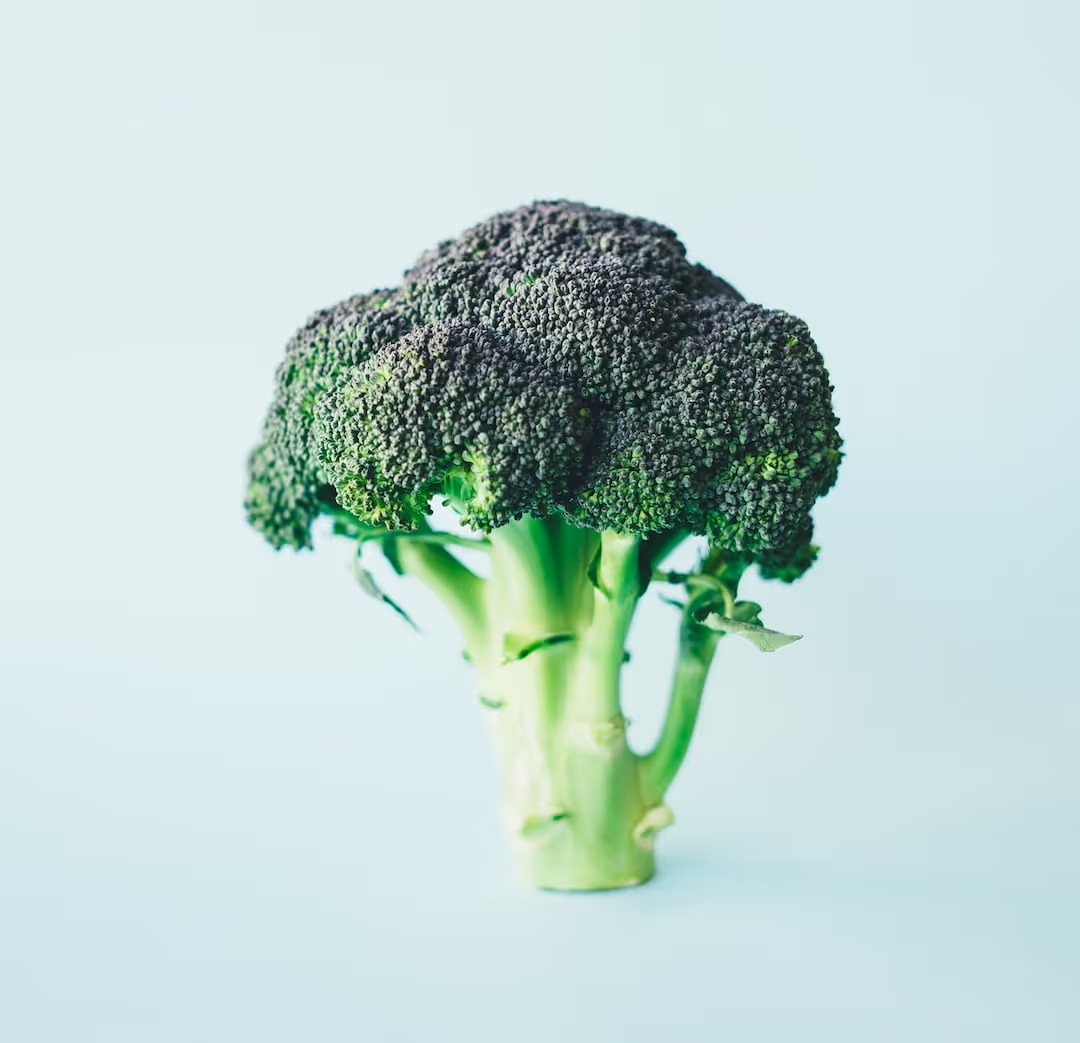
Growing Broccoli
Growing broccoli rewards gardeners with crisp florets and nutrient-rich greens perfect for your kitchen table. Cool temperatures between 60-70°F and fertile, well-draining soil give broccoli plants their best start. Start seeds indoors 6-8 weeks prior to the last spring frost—or sow directly into the garden once frost passes—to enjoy an abundant harvest; read on for simple tips and tricks to master growing broccoli at home.
Cheatsheet: Broccoli Growing Made Simple
🌱 Best Planting Times
- Spring: Start seeds indoors 6-8 weeks before last frost (45-75°F / 7-24°C)
- Fall: Sow midsummer for fall harvest; avoid peak heat
🧑🌾 Soil & Placement
- Full sun (6-8 hrs), slightly acidic (pH 6.0-7.0)
- Enrich with compost or well-rotted manure
- Space 18-24 in (45-60 cm) apart in rows 24-36 in (60-90 cm) apart
💧 Water & Feed
- Keep soil moist, 1-1.5 in (2.5-4 cm) water/week
- Mulch for cool roots & fewer weeds
- Side-dress with organic fertilizer at transplant and when heads form
🐛 Pest & Disease Control
- Cover with row covers to block cabbage worms
- Handpick caterpillars; use neem oil if needed
- Rotate crops yearly to prevent soil-borne disease
✂️ Harvest for Best Flavor
- Snip central head when tight & 4-7 in (10-18 cm) across
- Harvest side shoots for weeks after main head removal
- Refrigerate promptly; nutrients peak at harvest
🥦 Health Boost
Broccoli delivers fiber, vitamin C, K, and antioxidants. One cup offers 135% RDA vitamin C.
Grow year-round for continuous nutrition and self-sufficiency.
🛠️ Tools and Products You'll Need
- Broccoli seeds or seedlings
- Hand trowel
- Watering can or hose
- Mulch (straw, leaves, or grass clippings)
- Compost or organic fertilizer
- Row covers
- Garden scissors or pruners
📝 Quick Steps
- Start seeds indoors 6-8 weeks before last frost, or direct sow after soil reaches 50°F / 10°C.
- Transplant seedlings outdoors 2 weeks before last frost, spacing as above.
- Water and mulch immediately.
- Feed at planting and as heads form.
- Protect from pests and weed regularly.
- Harvest heads before florets open.
- Continue to harvest shoots and enjoy.
-
Growing Broccoli: timing, climate, and my calendar
Growing Broccoli rewards cool heads and cooler weather, so I plan for spring and fall, never peak summer. Ideal air temps sit around 60 to 70 F, 15 to 21 C, and heads sweeten after light frost at 28 to 32 F, minus 2 to 0 C.
I start seeds indoors 4 to 6 weeks before last frost, then transplant 2 to 3 weeks before that date. For fall crops, I sow 10 to 12 weeks before first frost, because mature plants ride out cold better than seedlings.
"Broccoli grows best at 65 to 70 F and cool night temperatures" University of Minnesota Extension.
Soil prep: feed the engine
I aim for a loose, living bed with 2 to 3 inches, 5 to 7.5 cm, of compost worked into the top 8 to 10 inches, 20 to 25 cm. Brassicas demand nitrogen, so I side dress with a balanced organic fertilizer, about 0.5 cup per plant for a 5-5-5, once plants are established.
Broccoli roots like pH 6.2 to 7.0, slightly alkaline helps reduce clubroot risk. If soil tests low in boron, a tiny corrective dose guided by your lab prevents hollow stem, and I only do this after a professional test because boron can burn crops.
Starting seeds and raising sturdy transplants
I germinate at 75 to 80 F, 24 to 27 C, then drop to 55 to 65 F, 13 to 18 C, under strong lights once they sprout. Seedlings with fat stems and short internodes handle wind, so I brush them daily or run a fan lightly.
Each cell gets one seed, and I up-pot from 128s to 50s if roots fill early. I harden off for 7 to 10 days, adding sun and wind in small bites to avoid transplant shock and premature buttoning, those tiny permanent heads caused by stress.
Transplanting, spacing, and layout
I plant 16 to 20 inches apart, 40 to 50 cm, with 24 to 30 inches, 60 to 75 cm, between rows, then tuck in a 2 to 3 inch, 5 to 7.5 cm, mulch cap. Transplants go slightly deeper than they grew in the tray to anchor them.
An angled cut on the stem at harvest sheds water so stems do not rot, and it invites vigorous side-shoots afterward. I keep drip lines set to deliver slow, even moisture right at the root zone.
Water, mulch, and heat management
Consistent moisture prevents bitterness and hollow stems, so I target 1 to 1.5 inches, 2.5 to 3.8 cm, of water weekly. On heat spikes above 80 F, 27 C, I use 30 percent shade cloth to hold quality and prevent loose beads.
"1 inch of water equals 0.62 gallons per square foot" USDA NRCS, a handy way to calibrate irrigation.
Pest and disease playbook, field tested
I treat pest management like a rhythm section, steady and early. Floating row cover from transplant keeps moths from laying eggs on leaves, which stops the worst damage upfront.
- Caterpillars cabbage worms, loopers, diamondback: hand pick at first sign, then rotate Bacillus thuringiensis kurstaki and spinosad if thresholds rise, always late day to spare pollinators.
- Aphids: a hard water spray first, then insecticidal soap, and I release lacewings if populations spike.
- Flea beetles: keep plants covered early, use trap crops like radish on row edges, and sticky cards for monitoring.
- Harlequin bugs: crush egg clusters, weed brassica volunteers, and keep rows tight to reduce host refuges.
For disease, I rotate brassicas 3 years away from the same beds, and I start clean with certified seed. Downy mildew and Alternaria ease up with airflow, morning watering, and resistant varieties labeled DM or ALR.
Clubroot loves acidic, soggy ground, so I lime to near neutral and raise beds for drainage. I remove plant debris promptly and never compost infected roots.
"Diamondback moth larvae can reduce yields significantly if unmanaged" UC IPM, a reminder to scout weekly.
Varieties that earn space in my beds
- Belstar F1 reliable organic favorite, 65 to 75 days, handles spring and fall, steady side shoots.
- Arcadia F1 cold tolerant for late fall harvests, tight domes and heavy secondary cuts.
- Marathon F1 late season workhorse, dense heads with excellent bead uniformity in cool weather.
- Green Magic F1 earlier, 57 to 63 days, useful for quick spring windows before summer heat.
- De Cicco heirloom, modest central head but prolific side shoots, great for extended picking.
- Chinese broccoli, gai lan Brassica oleracea var. alboglabra, tender stems and leaves, stir-fry gold.
- Romanesco fractal beauty, technically a cauliflower type, similar culture and timing.
For hot zones, I plant early spring Belstar, then pivot to fall Arcadia and Marathon which finish sweet in cold. In short seasons, Green Magic buys enough speed to win the race.
Fertilizing without guesswork
I side dress once plants hit the hand-sized leaf stage, about 3 to 4 weeks after transplant, with a half cup of feather meal or a cup of finished compost around the drip line. At first head sighting, I feed lightly again to fuel side shoots without pushing hollow stems.
On sand, I split feedings into smaller weekly doses, because nutrients move fast in coarse soil. In clay, I add extra compost and keep watering slow to prevent anaerobic pockets.
Common broccoli headaches and how I fix them
- Buttoning tiny heads early: seedlings got stressed by cold 35 to 50 F, 2 to 10 C, or drought, so I start later, harden off better, and transplant into steady moisture.
- Bolting heads loosen and flower: heat above 80 F, 27 C, or long days, so I grow fall crops and add shade cloth in heat waves.
- Hollow stem: fast growth with uneven water or low boron, so I steady irrigation and follow lab recommendations only.
- Bitter flavor: heat stress and drought, so I push mulch, water, and pick a day earlier.
Harvest, yield, and storage that keep flavor on point
I harvest when beads are tight and domed, usually at 4 to 8 inches, 10 to 20 cm, across, just before any yellow shows. I cut in cool morning, 6 to 8 inches, 15 to 20 cm, down the stem for a crisp bite and then chase side shoots every few days.
From a 10 foot, 3 m, row, I plan on 6 to 10 pounds, 2.7 to 4.5 kg, across the season with side shoots shining in fall. I store heads unwashed in a breathable bag at 32 to 36 F, 0 to 2 C, high humidity.
For freezing, I blanch florets 2 to 3 minutes, chill, drain, then pack tight. The texture holds better if I harvest just shy of full size.
Companions, rotation, and cover crops
Dill and sweet alyssum pull in parasitic wasps that keep caterpillars honest, and I tuck them on bed edges. I give strawberries and brassicas separate corners to reduce shared pest pressure.
After harvest, I sow oats and crimson clover for winter cover that loosens soil and feeds microbes. Before planting broccoli again, I rotate through legumes or alliums for at least three seasons.
Buying guide, tools, and worthwhile upgrades
- Seed and starts: buy fresh seed dated for the current year, or pick sturdy transplants with stocky stems and deep green leaves.
- Cell trays: 72s for quick turns, 50s for long, cool hardening without root bind.
- Row cover: light weight for insect exclusion, heavier weight for spring frost protection at 2 to 4 F, 1 to 2 C.
- Drip irrigation: pressure-compensating tape for even delivery, a simple timer for consistency.
- Soil test: once a year tells me what to feed, and saves money on guesswork.
A good knife makes harvest fast and clean. Shade cloth and hoops turn a marginal summer into a decent spring or fall finish.
Flavor, nutrition, and why I still chase the perfect head
Broccoli delivers vitamin C, vitamin K, folate, and fiber in serious amounts, with 1 cup raw giving about 90 percent of daily vitamin C according to USDA. Sulforaphane-rich florets hit their stride when cooked lightly, so I steam or stir-fry until just tender.
"Higher intakes of broccoli and other crucifers correlate with lower risk of certain cancers" American Institute for Cancer Research, summarizing decades of epidemiology.
Johns Hopkins researchers helped spotlight sulforaphane in broccoli and even more in broccoli sprouts, useful context for growers who save space for a tray near the kitchen. Out in the beds, cold nights concentrate sugars, and that snap you hear at the cut is the payoff for steady water and cool weather.
Pro tips I learned the hard way
- Plant deeper than the plug, then tamp soil to remove air gaps around roots.
- Scout with a white card, one tap per plant, counting caterpillars long before leaves look laced.
- Stagger plantings every two weeks for a rolling harvest, two or three small waves beat one glut.
- Leave 3 inches, 7.5 cm, of stem when cutting the central head to trigger more side shoots.
- Harvest at dawn for the crispiest stems, then dunk in cold water to pull field heat fast.
Quick reference: success checklist
- Soil pH 6.2 to 7.0, compost rich, and good drainage.
- Plant 16 to 20 inches, 40 to 50 cm, apart with mulch and drip.
- Water 1 to 1.5 inches, 2.5 to 3.8 cm, weekly, steady and deep.
- Cover early, feed modestly, and rotate beds for 3 years.
- Pick tight heads, then chase side shoots until hard frost.
"Per capita availability of fresh broccoli in the U.S. reached about 7 to 8 pounds in recent years" USDA Economic Research Service, a sign the appetite keeps growing.
Frequently Asked Questions About Cultivating Broccoli
What is the ideal climate for broccoli cultivation?
Broccoli thrives in cool weather conditions, favoring temperatures between 60°F to 70°F (15°C to 21°C). Prolonged exposure to temperatures above 75°F (24°C) can cause broccoli plants to bolt, diminishing crop quality. For best results, aim to plant either early spring or late summer for optimal maturity during cooler seasons.
How much sunlight do broccoli plants need?
Broccoli plants require full sunlight, ideally 6 to 8 hours per day. Selecting a sunny spot in your garden promotes vigorous growth and healthy development of broccoli heads.
What kind of soil enables broccoli plants to grow best?
Broccoli thrives in rich, well-draining soil with a pH range of 6.0 to 7.0. Enhance your planting area with organic compost or aged manure prior to planting to bolster soil nutrients and structure.
How often should broccoli plants be watered?
Provide broccoli plants with regular watering, supplying around 1 to 1.5 inches (2.5 to 4 cm) of water per week. Water deeply at the roots rather than overhead to prevent common fungal diseases and keep the soil consistently moist but not waterlogged.
How do I determine the optimal harvesting time for broccoli?
Broccoli heads are optimal for harvest once they reach a compact and firm appearance, before the flower buds open or turn yellow. Typically, this stage occurs when the central head measures approximately 4 to 7 inches (10 to 18 cm) in diameter. Harvest during early morning hours to maintain peak flavor and texture.
What plants grow well alongside broccoli?
Companion planting enhances broccoli growth and flavor. Excellent companions include herbs such as dill, rosemary, sage, and thyme, as well as vegetables like onions, spinach, beets, and celery. Avoid planting broccoli near tomatoes, peppers, or strawberries, as proximity can lead to diminished growth.
How can common broccoli pests be managed organically?
To control pests, encourage beneficial insects such as ladybugs and lacewings by planting attractive flowers nearby. Utilize row covers to prevent cabbage worms or aphids from laying eggs. Regular monitoring and manual removal of pests, combined with applying organic insecticidal soaps or neem oil, provides effective pest management.
Can broccoli withstand frost conditions?
Mature broccoli plants can endure light frost conditions, tolerating temperatures as low as 28°F (-2°C). In fact, exposure to frost often improves flavor. However, prolonged freezing conditions below 26°F (-3°C) may damage the heads and reduce plant health.
Growing Broccoli rewards patience and attention. Pick the right spot—cool, sunny, and rich soil. Pay heed to timing; start early for spring or late for fall. Water consistently, feed with compost, and keep an eye out for pests. Harvest when the heads are tight and deep green. Rotate crops to keep your beds healthy. Broccoli doesn’t ask for perfection, just care. Give it that, and your garden pays you back in flavor and nutrition. For more variety in your plot, consider pairing with crops like lettuce or bok choy. A steady hand and a watchful eye—that’s the recipe for a bold, healthy harvest.
Health Benefits of Homegrown Broccoli
Nutritional Powerhouse
Broccoli delivers vitamin C (89 mg per 100g—higher than oranges), calcium, potassium, and fiber, promoting immunity, bone health, and digestion.
Freshness for Maximum Nutrients
Freshly harvested, garden-grown broccoli retains up to 50% more nutrients than supermarket counterparts due to immediate consumption.
Sulforaphane Advantage
Broccoli sprouts and young heads contain abundant sulforaphane, studied for antioxidant and anti-inflammatory benefits linked to reduced risk of chronic diseases.
Home Harvested Taste Impact
Direct garden harvest reduces bitter compound buildup (glucosinolates) that occurs with storage, giving sweeter, milder flavor and encouraging more frequent consumption.
Self-Sufficiency Boost
Regular broccoli crop planting enhances dietary self-sufficiency, diversifying food sources without pesticide residues common in commercial produce.
Find out which plants will thrive in your garden!
Answer a few fun questions and get custom plant recommendations perfect for your space. Let’s grow something amazing together!

start your season
